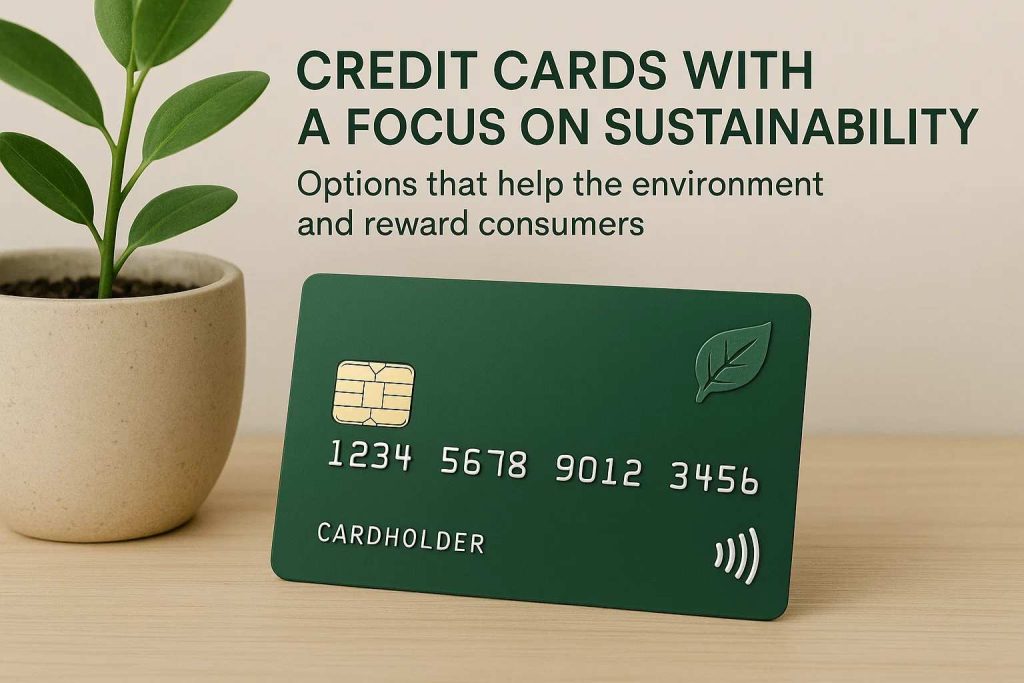The financial industry has undergone major transformations in recent years, and one of the most notable is the integration of sustainability into products that were once purely transactional. A credit card is no longer just a tool for payments and benefits; it can now reflect a consumer’s environmental values.
Companies have realized that today’s cardholders are seeking more than convenience and rewards—they want to know their choices contribute to a greener future. This shift has opened the door to credit cards designed specifically to combine financial advantages with eco-friendly initiatives.
The rise of eco-friendly credit cards

One of the key factors behind the emergence of sustainable credit cards is the growing awareness of climate change. Consumers are increasingly interested in how their lifestyle choices affect the environment, and financial products are being reshaped to meet that demand.
In practice, this can mean a variety of initiatives. Some cards promise to plant a tree for every set amount of money spent, while others channel a percentage of profits into renewable energy projects. Beyond philanthropic models, there are even options that integrate sustainable materials in the card’s physical design, replacing plastic with biodegradable or recycled alternatives.
How rewards programs support environmental goals
Rewards have always been a main attraction for credit cards, and in the sustainability context, they take on a new meaning. Instead of redeeming points solely for travel or shopping, cardholders can choose to allocate them toward eco-friendly causes. This might include donating to environmental organizations, funding clean water projects, or supporting conservation efforts.
The concept is powerful because it connects individual spending habits to collective impact. Every purchase made with the card becomes an opportunity to contribute to something larger than personal benefit. For example, a cardholder could convert accumulated rewards into offsets that neutralize their carbon footprint from travel.
The role of technology in sustainable credit solutions
Technology has been a driving force behind the growth of environmentally conscious credit card programs. Digital platforms allow issuers to provide cardholders with real-time information about their spending’s ecological impact. Some apps calculate the carbon emissions linked to purchases, enabling users to track and reduce their footprint.
Companies like Mastercard have partnered with global organizations to expand these possibilities. Through such collaborations, cardholders can seamlessly support international climate projects with each transaction. This integration of financial technology and environmental action represents a new form of accountability, where consumers are informed and empowered to make better choices every day.
Materials, design, and circular economy
Another dimension of sustainability in credit cards lies in their physical production. Traditionally, plastic cards contributed to waste and pollution, but issuers are experimenting with recycled, biodegradable, and even ocean-recovered materials. This small change reduces dependence on virgin plastic and highlights a commitment to circular economy practices.
The emphasis on eco-friendly design also resonates with branding. A card made from recycled materials does more than just minimize waste—it serves as a visible reminder of the consumer’s and the issuer’s commitment to sustainability. This symbolism reinforces the bond between values and financial behavior, showing that sustainability is embedded in every stage of the card’s lifecycle, not only in its transactions.
Why consumers are embracing green financial products
The adoption of sustainable credit cards reflects a broader cultural trend where consumers demand that companies align with their ethical standards. People are no longer satisfied with traditional financial perks; they want to feel that their choices contribute to a meaningful cause. This is particularly true among younger generations, who prioritize environmental responsibility in their consumption patterns.
Green credit cards offer a practical solution because they fit seamlessly into everyday life. Cardholders do not need to make drastic changes to support eco-friendly causes; their regular spending already contributes. This convenience, combined with the growing urgency of environmental issues, explains why these financial products are gaining traction worldwide.



